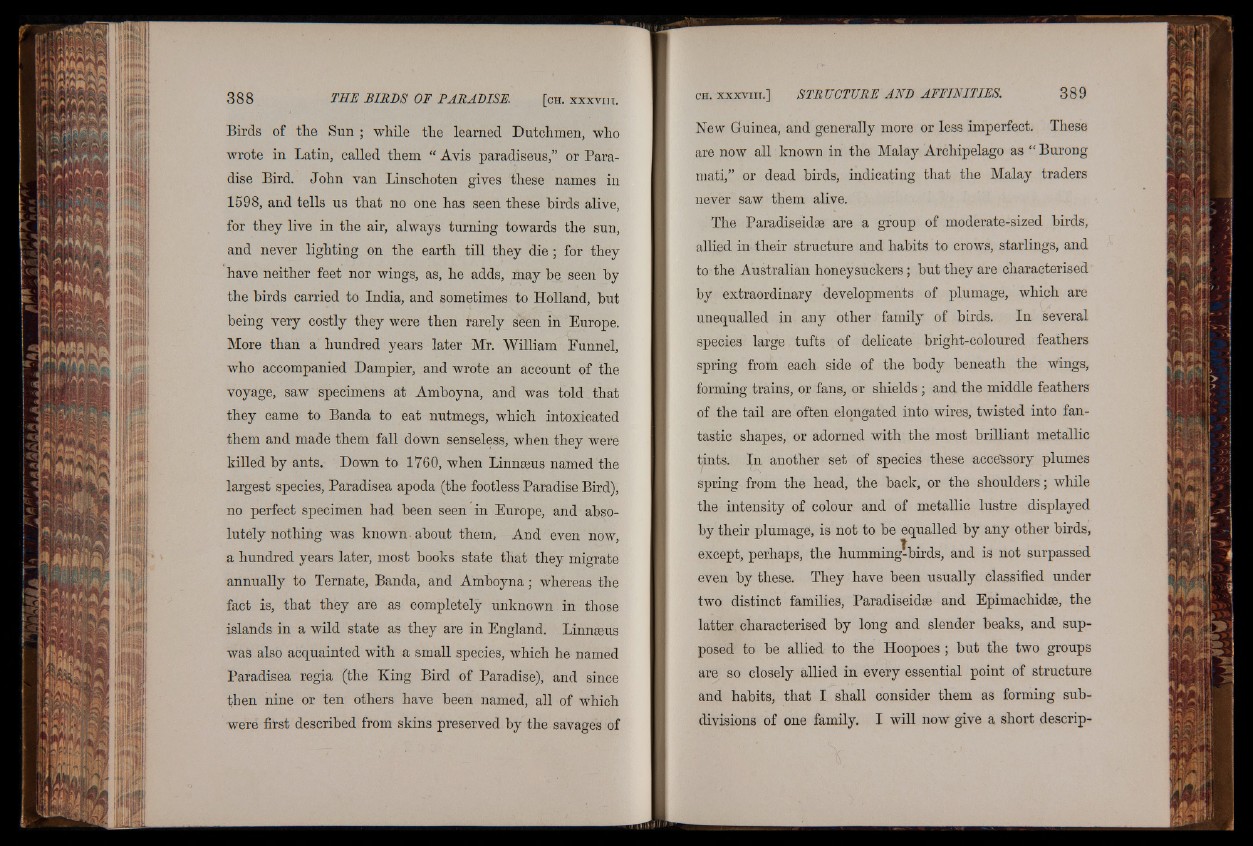
Birds of the Sun ; while the learned Dutchmen, who
wrote in Latin, called them “ Avis paradis eus,” or Paradise
Bird. John van Linschoten gives these names in
1598, and tells us that no one has seen these birds alive,
for they live in the air, always turning towards the sun,
and never lighting on the earth till they die ; for they
have neither feet nor wings, as, he adds, ,lnay be seen by
the birds carried to India, and sometimes to Holland, but
being very costly they were then rarely seen in Europe.
More than a hundred years later Mr. William Funnel,
who accompanied Dampier, and wrote an account of the
voyage, saw specimens at Amboyna, and was told that
they came to Banda to eat nutmegs, which intoxicated
them and made them fall down senseless, when they were
killed by ants. Down to 1760, when Linnaeus named the
largest species, Paradisea apoda (the footless Paradise Bird),
no perfect specimen had been seen in Europe, and absolutely
nothing was known, about them. And even now,
a hundred years later, most books state that they migrate
annually to Ternate, Banda, and Amboyna; whereas the
fact is, that they are as completely unknown in those
islands in a wild state as they are in England. Linnaeus
was also acquainted with a small species, which he named
Paradisea regia (the King Bird of Paradise), and since
then nine or ten others have been named, all of which
were first described from skins preserved by the savages of
Hew Guinea, and generally more or less imperfect. These
are now all known in the Malay Archipelago as “ Burong
mati,” or dead birds, indicating that the Malay traders
never saw them alive.
The Paradiseidse are a group of moderate-sized birds,
allied in their structure and habits to crows, starlings, and
to the Australian honeysuckers; but they are characterised
by extraordinary developments of plumage, which are
unequalled in any other family of birds. In several
species large tufts of delicate bright-coloured feathers
spring froin each side of the body beneath the wings,
forming trains, or fans, or shields; and the middle feathers
of the tail are often elongated into wires, twisted into fantastic
shapes, or adorned with the most brilliant metallic
tints. In another set of species these accessory plumes
spring from the head, the back, or the shoulders; while
the intensity of colour and of metallic lustre displayed
by their plumage, is not to be equalled by any other birds,
except, perhaps, the humming-birds, and is not surpassed
even by these. They have been usually classified under
two distinct families, Paradiseidse and Epimachidse, the
latter characterised by long and slender beaks, and supposed
to be allied to the Hoopoes ; but the two groups
are so closely allied in every essential point of structure
and habits, that I shall consider them as forming subdivisions
of one family. I will now give a short descrip